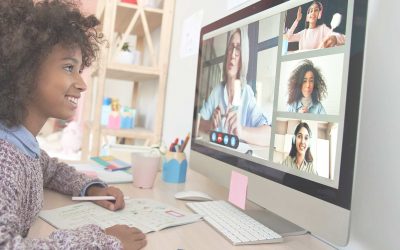What is Amblyopia? – Lazy Eye, and What You Can Do About It
Amblyopia, commonly known as lazy eye, is a visual impairment that can be corrected if detected early. The brain and eye need to work together to allow one to see properly. When the signal between the eye and the brain is reduced for various reasons, vision is affected.
Even with the best correction, eyeglasses, or contact lenses, the visual potential is reduced. The brain will favor the stronger eye, and the weaker eye is considered “lazy.” This vision development disorder tends to begin at infancy or early childhood.
Amblyopia is the most common cause of visual impairment in children, affecting about 3 out of every 100 children.
What causes amblyopia?
Since amblyopia begins in infancy, there are very few signs for parents to look out for other than strabismus (any unusual eye-misalignment or squinting). Children should have their eyes checked regularly to ensure both eyes are functioning and working together as a team.
There are three main causes of amblyopia: strabismic amblyopia, refractive amblyopia, and disruptive amblyopia.
Strabismic amblyopia – when the eye is misaligned, either wondering inwards or outwards. This causes doubling of vision. The brain would ignore the image from the misaligned eye to maintain single vision, and therefore cause that eye to become lazy.
Refractive amblyopia – when there is a large difference in refractive error (prescription) between the eyes, if uncorrected, the brain will naturally ignore the image from the poor eye and focus with the eye that produces the clearer image.
Disruptive amblyopia – usually when there’s an obstruction preventing a clear signal being transferred from the eye to the brain; for example, a corneal scar or a congenital cataract.
Amblyopia Treatment
As a child’s eye and brain is still plastic at a young age, the goal of amblyopia treatment is to force the weaker eye to work harder and produce better and stronger signals by blocking the signals from the stronger eye.
Patching therapy is often used. An eye patch is used over the stronger eye for a couple hours a day, forcing the weaker “lazy eye” to work a little harder. This exercise is done while doing a near task such as coloring or reading.
Atropine medication is another treatment method. Instilling this medication in the good eye to make it blurry and forcing the weaker “lazy eye” to work harder. This is usually the least favorable treatment since the child’s pupils would be dilated all day and are more light sensitive.
Patching or atropine treatment is recommended only after the underlying cause of amblyopia is determined and addressed first. For example, for strabismic amblyopia, strabismus surgery is done first; refractive amblyopia requires the refractive error be corrected with eyeglasses or contact lenses.
If you have any concerns about your child’s eyesight and suspect strabismus, please consult with your doctor.
Brenda is an optometrist and owner of Davisville Eye Care. She works with patients of all ages, starting as young as 6 months of age. As a new mom herself, Brenda is looking forward to sharing her personal experiences and professional expertise with fellow parents regarding children’s vision development.










